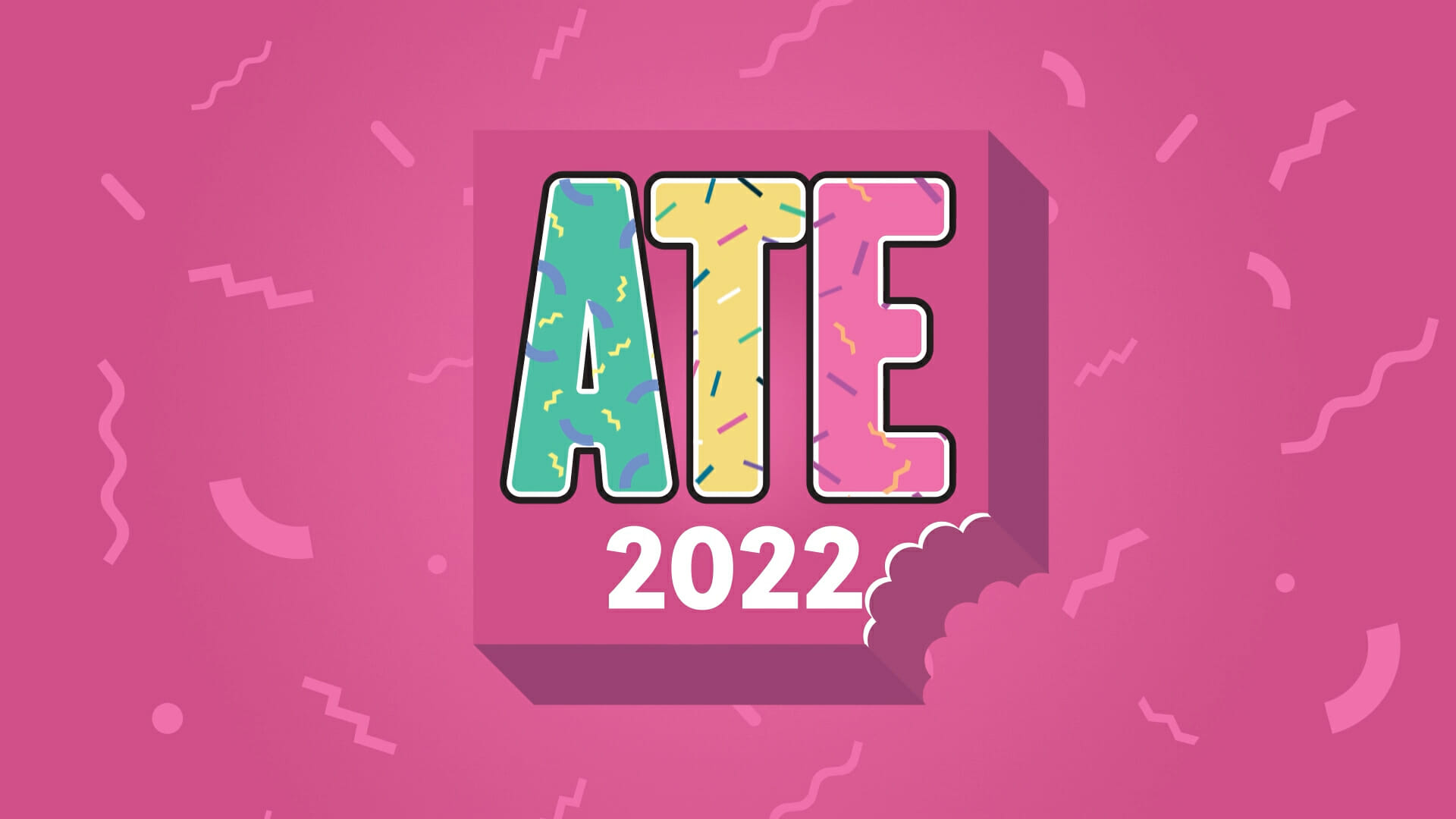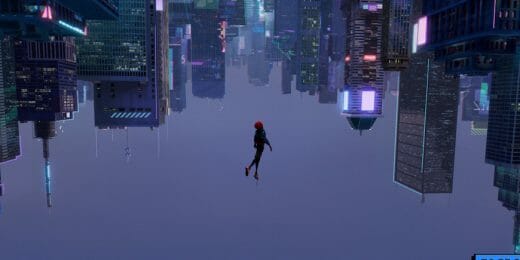
In June 2022, the team at Toon Boom Animation organized the Animation Trends Event. This first-ever ATE was a full three-day online animation conference, which brought together industry professionals, artists, and animators from around the world who work with Harmony and Storyboard Pro. To artists in attendance, we offered a virtual opportunity to artists, network, and get inspired by peers.
Didn’t have a chance to attend? You can scroll down to find ten selected highlights from our free interviews and panel discussions below. Looking for more? Be sure to visit our complete playlist on YouTube, with over fourteen hours of free videos about 2D animation, careers and game development.
1. The Cuphead Show! panel discussion with Lighthouse Studios
The Cuphead Show! is a new series from Netflix based on the hit sidescrolling game by Studio MDHR. We invited Lighthouse Studios’ Paul Madden, Assistant Director, and Andy Stevens, Animation Supervisor, to discuss their work the production. As Lighthouse Studios was responsible for the production from layout to locked picture, we caught up with Paul and Andy to learn about the production process and their advice for artists applying to work at their studio. (After watching our discussion, be sure to take a peek at the recently-released trailer for season 2.)
Paul: Before we got started in earnest on the series, the Netflix LA team gave us a list of cartoons that they were looking through — Popeye the Sailor Meets Sindbad the Sailor, Fleischer Studios’ Bimbo and Betty Boop shorts, and the early Mickey Mouse Silly Symphonies. It was great to see those cartoons come to the forefront again.
2. Pitching your animated project with Eric Calderon
Interested in pitching an animated series but don’t know who to ask for advice? Eric Calderon has 27 years of experience in the animation industry, and started his career writing script notes on Aeon Flux. Since then, Eric developed award-winning shows as an executive, writer, show-runner and producer, and hosts the YouTube series, Surviving Animation. This Animation Trends Event conversation covers the process of developing a series pitch, what materials are required, and how to get in the room to pitch your project.
Eric: The question I get most often is how to make a show bible. That seems to be where a lot of people focus all of their attention. But that’s the tip of the iceberg. Usually problems occur long before you’ve made the show bible.
3. Understanding Japanese anime with Yoko Ono
Yoko Ono (II on IMDb) is a highly regarded 2D animator and art director working in Tokyo, Japan. Yoko joined the animation industry in 1993, and worked for eight years at a studio that specialized in Western animation on shows such as Gargoyles and Nightmare Ned. She then went onto contribute to local productions, including Doraemon, Naruto and Fullmetal Alchemist: Brotherhood. We invited Yoko Ono onto our stream to discuss the pipeline in Japan’s animation industry and the craft of anime.
Yoko: There are a lot of people in our industry who say that layout is everything, which I sort of disagree with. I know a lot of things are locked down at this stage, but if it’s animation then it has to move too.
4. Mark Simon on storyboarding for live action
Mark Simon, also known as the Godfather of Storyboarding, is an Atlanta-based artist and instructor. The roles Mark took on throughout his career include story artist, producer and director for both live-action and animated projects. We invited Mark to the Animation Trends Event to discuss the process of storyboarding for live action, as well as his experience boarding on productions like The Walking Dead.
Mark: There were elements that were shot on set, and others were blue screen or shot on location. So we needed to make sure that we got every element for each shot. The director would mark off [the printed storyboard] like a to-do list, so by the end of the day we knew we are done.
5. Rigging Misconceptions with Colin Bennet and Rebecca Kartzmark
You may have heard of the technique referred to as ‘rigged animation,’ ‘cutout animation’ or ‘puppet animation.’ Whatever you call the craft, you might have questions about 2D character rigging: Is there one correct way to rig a character? Should rigs use as many fancy features as possible or should rigging artists try to keep things simple? What do animators actually like to work with, anyway? Weighing on these topics are Colin Bennet (aka Onion Skin) and Rebecca Kartzmark (an animator at Mercury Filmworks).
Colin: This rig was built to be an extra. He only appears in two or three shots. So if you only had one method of rigging everything, where the arms were: upper arm, lower arm, hands, sleeves — with everything cutting in and out of each other, with all of these different parts, it would take a very long time.
However if you watch the storyboard and say: “Hang on. They only appear in three shots the entire time, sitting behind a desk, from the waist up, with their arms folded.” Then you’d know that you would be out of your mind to rig their legs at all.
6. Starting your career in animation panel discussion
Anxious about starting a career in animation? This Animation Trends Event panel provides advice to students and artists entering the animation industry, information about the different roles and job opportunities that are typically available to recent graduates, as well as how students can build portfolios with these roles in mind. Guest experts include Brooke Keesling (head of animation talent development at Bento Box), Ellen Su (head of artistic recruiting at Titmouse), and Alison Mann (talent manager and co-president at Fourth Wall Animation Production). If you want to know how to get your foot in the door, there’s nobody better to ask for advice than a recruiter or talent manager.
Brooke: While you’re in school, don’t focus on getting jobs the whole time. You’re in school to make your work and find your voice as an artist. Take that time to enjoy making the things you want to make.
7. Anime outside the traditional pipeline
David Liu is an artist with over a decade’s experience in animation, and has worked across various disciplines, including concept art, animation and art direction. David’s animation directing credits include promotional animation on Going Under, Spiritfarer, River City Girls Zero and The Batman. In this interview, Marie-Ève Lacelle and David discuss adapting a traditional anime production pipeline to digital animation.
David: There are definitely a few different approaches [to shadows and tones]. A very art-directed colour palette, with tones for every set of colours already decided is one way to go about it. You can get great dynamic frames that way, because you can pick the colour that will go with this red shirt. And I do that sometimes when I do cel-style illustration work.
But a way that I like going about tones, in animation, is having a lighting layer on its own. So when I import it for compositing I can use different blending styles. Or use it as a mask and have that set to overlay for one scene, or multiply for another scene. This way I can change the colour and how it interacts with other colours.
8. Hilda panel discussion with Mercury Filmworks
Hilda is an animated series from Silvergate Media and Mercury Filmworks, adapted from Luke Pearson’s series of graphic novels. Following the release of Hilda and the Mountain King, we spoke with director, Andy Coyle, and assistant director, Megan Ferguson, about the process of adapting the graphic novel to animation. This discussion covers Andy and Megan’s roles on Hilda, their advice for artists applying to work at Mercury Filmworks, as well as sharing their approach to solving creative problems.
Andy: How do we do a realtime sunset over the course of a minute of screen time? We came up with a system where we created doubles of the background. We painted an ‘A’ version of the key: a regular soft daytime look. Then we would paint a ‘B’ version of the key: a more sunset version, where we wanted to end up to reflect twilight. Then we could layer them on top of each other in Harmony and use a transparency node to fade, scene-by-scene, through the spectrum of the sunset.
9. Animation Careers: Animators panel discussion
Curious about the work that goes into animation, and if being an animator is the right job for you? This panel discussion on animation industry careers features three experienced animators. We spoke with panelists Eden Timm (now a director), Nana Boachie, and Maxwell Racz about their work, their outlook on the industry, and their advice for any aspiring artists considering becoming animators themselves.
Nana: As a teenager, I made my own shorts with my friends. And you would upload them to Newgrounds, because that was the hip place to be in the 2000s, I guess. After a time, that hobby became more and more accessible as a real career.
10. Art Stream with India Swift
India Swift is a director and animator at the Knights of the Light Table as well as the creator and author of the upcoming graphic novel, The Girl and the Glim. In this art stream, India Swift demonstrates drawing techniques in Harmony Premium while discussing the industry, the craft, and her motivation for being an animator with Toon Boom’s Marie-Ève Lacelle (aka @Zebirdbrain).
India: As soon as I found out that animation was a job, that someone made the things on-screen… I was obsessed with becoming an animator. And I drew all the time anyway, because I loved trying to draw the characters.
- Interested in more Animation Trends Event panels? Find our full playlist on YouTube.
- Are you ready to animate after watching these discussions? Start your next project by downloading a 21-day trial of Harmony and Storyboard Pro.
- Missed the live training sessions? Learn more about the new You can animate in Harmony! tutorial series by Tony Ross.



